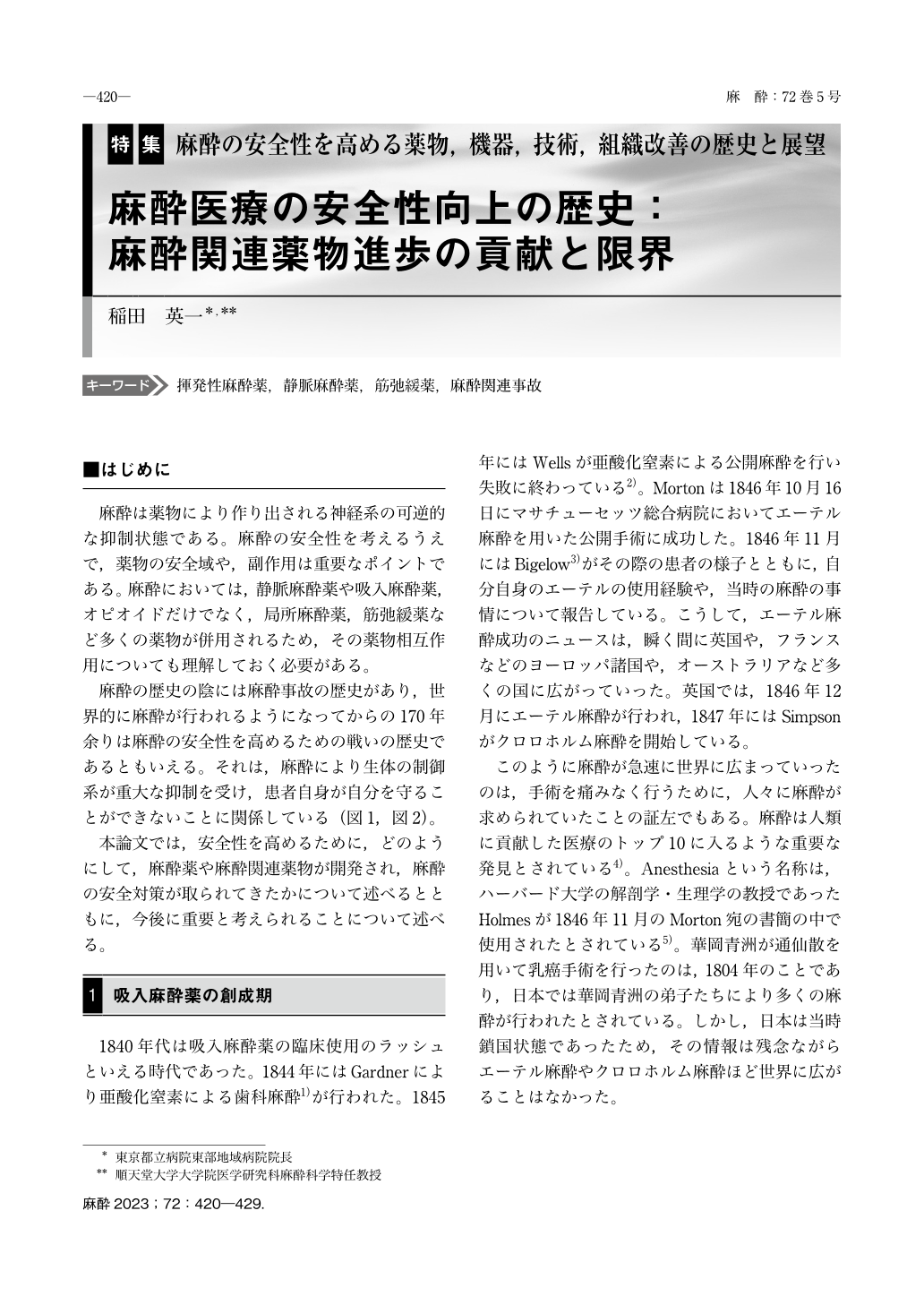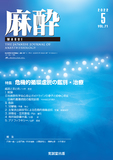Japanese
English
- 有料閲覧
- Abstract 文献概要
- 1ページ目 Look Inside
- 参考文献 Reference
- サイト内被引用 Cited by
はじめに
麻酔は薬物により作り出される神経系の可逆的な抑制状態である。麻酔の安全性を考えるうえで,薬物の安全域や,副作用は重要なポイントである。麻酔においては,静脈麻酔薬や吸入麻酔薬,オピオイドだけでなく,局所麻酔薬,筋弛緩薬など多くの薬物が併用されるため,その薬物相互作用についても理解しておく必要がある。
麻酔の歴史の陰には麻酔事故の歴史があり,世界的に麻酔が行われるようになってからの170年余りは麻酔の安全性を高めるための戦いの歴史であるともいえる。それは,麻酔により生体の制御系が重大な抑制を受け,患者自身が自分を守ることができないことに関係している(図1,図2)。
本論文では,安全性を高めるために,どのようにして,麻酔薬や麻酔関連薬物が開発され,麻酔の安全対策が取られてきたかについて述べるとともに,今後に重要と考えられることについて述べる。
Anesthesia was a gospel for mankind. However, since the mid-19th century, when ether anesthesia was introduced, there have been serious anesthetic complications associated with anesthesia, including death and permanent brain damage. Even now, we have serious anesthesia accidents, but there is a growing awareness of safety in anesthesia and perioperative period, and development of anesthesia-related drugs such as anesthetics, muscle relaxants, and antagonists with good controllability and few side effects. We now have development of monitoring equipment such as central nervous system monitors, understanding of drug action mechanisms and pharmacodynamics, development of drug administration simulation programs, dissemination of crisis response algorithms, simulation training, development of computer-controlled administration of anesthetics and anesthesia-related drugs, etc. The safety of anesthesia is considered to have improved. There is no change in the fact that fostering a safety culture is important as a basis for improving the safety of anesthesia and perioperative management in the future.

Copyright © 2023 KOKUSEIDO CO., LTD. All Rights Reserved.


